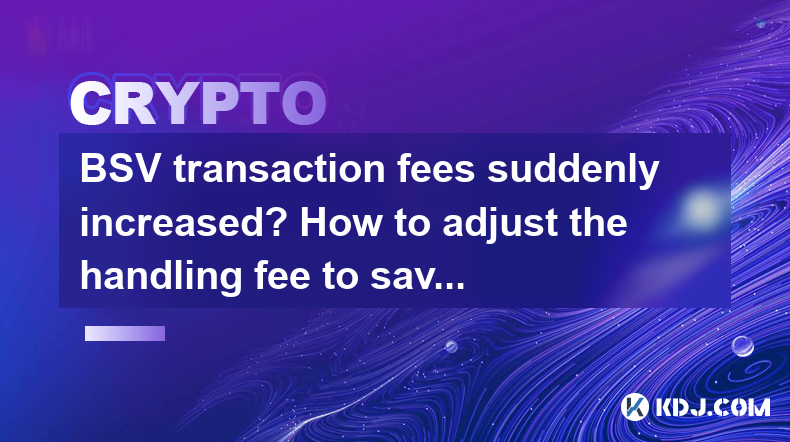-
 Bitcoin
Bitcoin $96,789.1858
2.52% -
 Ethereum
Ethereum $1,833.2358
1.68% -
 Tether USDt
Tether USDt $1.0000
-0.01% -
 XRP
XRP $2.1378
1.85% -
 BNB
BNB $605.4871
1.06% -
 Solana
Solana $146.6182
0.78% -
 USDC
USDC $1.0002
0.00% -
 Dogecoin
Dogecoin $0.1730
2.13% -
 Cardano
Cardano $0.6815
2.82% -
 TRON
TRON $0.2444
-0.61% -
 Sui
Sui $3.4002
0.79% -
 Chainlink
Chainlink $13.8976
2.72% -
 Avalanche
Avalanche $19.8692
0.60% -
 Stellar
Stellar $0.2607
1.17% -
 UNUS SED LEO
UNUS SED LEO $8.7316
0.69% -
 Shiba Inu
Shiba Inu $0.0...01283
1.41% -
 Toncoin
Toncoin $3.0122
0.14% -
 Hedera
Hedera $0.1772
1.80% -
 Bitcoin Cash
Bitcoin Cash $372.8971
3.45% -
 Hyperliquid
Hyperliquid $21.1727
4.94% -
 Litecoin
Litecoin $92.2931
12.20% -
 Polkadot
Polkadot $3.9738
1.99% -
 Dai
Dai $1.0001
0.00% -
 Monero
Monero $288.3772
1.20% -
 Bitget Token
Bitget Token $4.3184
0.52% -
 Ethena USDe
Ethena USDe $1.0003
-0.01% -
 Pi
Pi $0.5813
-1.20% -
 Pepe
Pepe $0.0...08137
2.01% -
 Bittensor
Bittensor $368.5967
-0.62% -
 Uniswap
Uniswap $4.9346
0.05%
What is the transaction fee for SOL?
SOL transaction fees include a base fee of 0.000005 SOL per signature and an optional priority fee, making total fees low compared to other blockchains like Ethereum.
Apr 22, 2025 at 11:00 am

What is the Transaction Fee for SOL?
The Solana (SOL) blockchain is known for its high throughput and low transaction fees, making it an attractive option for users and developers alike. Understanding the transaction fee structure for SOL is crucial for anyone looking to engage with the network. In this article, we will delve into the specifics of SOL transaction fees, how they are calculated, and what factors can affect them.
Understanding Solana's Transaction Fee Model
Solana's transaction fee model is designed to be simple yet effective. The primary components of a SOL transaction fee include the base fee and the priority fee. The base fee is a fixed amount that every transaction must pay to be processed on the network. The priority fee, on the other hand, is optional and can be adjusted by the user to prioritize their transaction over others.
Base Fee on Solana
The base fee on Solana is currently set at 0.000005 SOL per signature. This fee is charged for each signature included in a transaction. For example, a simple transfer of SOL from one wallet to another typically involves one signature, so the base fee would be 0.000005 SOL. If a transaction involves multiple signatures, such as in the case of a multi-signature wallet, the base fee will be multiplied accordingly.
Priority Fee on Solana
The priority fee is an additional amount that users can pay to increase the chances of their transaction being processed quickly. This fee is not fixed and can be set by the user. The higher the priority fee, the more likely it is that the transaction will be included in the next block. However, it's important to note that setting a priority fee is optional, and many transactions on the Solana network are processed without one.
Calculating Total Transaction Fees
To calculate the total transaction fee for a SOL transaction, you need to add the base fee and the priority fee. For example, if you are sending SOL and you decide to include a priority fee of 0.00001 SOL, the total transaction fee would be 0.000005 SOL (base fee) + 0.00001 SOL (priority fee) = 0.000015 SOL.
Factors Affecting SOL Transaction Fees
Several factors can influence the transaction fees on the Solana network. Network congestion is one of the primary factors. During periods of high network activity, users may need to increase their priority fees to ensure their transactions are processed promptly. The size of the transaction can also affect the fee, as larger transactions that involve more data may require additional signatures and thus higher base fees.
How to Set Transaction Fees on Solana
Setting transaction fees on Solana can be done through various wallets and platforms that support SOL transactions. Here’s a step-by-step guide on how to do it using the Phantom wallet, one of the most popular wallets for Solana:
- Open the Phantom wallet on your device.
- Select the 'Send' option to initiate a transaction.
- Enter the recipient’s address and the amount of SOL you wish to send.
- Click on the 'Advanced' tab to access the fee settings.
- Adjust the priority fee if you want to expedite your transaction. The default is usually set to 0, which means no priority fee.
- Review the total fee (base fee + priority fee) and confirm the transaction.
Comparing SOL Transaction Fees to Other Blockchains
When compared to other blockchains, Solana's transaction fees are notably low. For instance, Ethereum's gas fees can fluctuate significantly and often reach much higher levels, especially during network congestion. Bitcoin transaction fees can also be higher, particularly for faster processing times. Solana's design allows for a more predictable and generally lower fee structure, which is one of its key advantages.
Real-World Examples of SOL Transaction Fees
To provide a clearer picture, let's look at some real-world examples of SOL transaction fees. A simple transfer of SOL between two wallets typically incurs a fee of around 0.000005 SOL. If a user wants to expedite the transaction during a busy period, they might add a priority fee of 0.00001 SOL, making the total fee 0.000015 SOL. For more complex transactions, such as those involving smart contracts or multiple signatures, the fees can be slightly higher but still remain relatively low compared to other networks.
Frequently Asked Questions
Q: Can the base fee on Solana change over time?
A: Yes, the base fee on Solana can be adjusted by the network's developers if necessary. However, any changes would be communicated well in advance to the community to ensure transparency.
Q: Is it possible to send SOL without paying any fees?
A: No, every transaction on the Solana network requires at least the base fee of 0.000005 SOL per signature. The priority fee is optional, but the base fee is mandatory.
Q: How can I check the current transaction fees on Solana?
A: You can check the current transaction fees on Solana by using blockchain explorers like Solscan or by looking at the fee settings in your wallet, such as Phantom, before sending a transaction.
Q: Are there any tools to help estimate the best priority fee for my transaction?
A: Yes, some wallets and platforms provide tools to estimate the optimal priority fee based on current network conditions. For instance, Phantom wallet offers a fee estimator that suggests a priority fee based on the desired transaction speed.
Disclaimer:info@kdj.com
The information provided is not trading advice. kdj.com does not assume any responsibility for any investments made based on the information provided in this article. Cryptocurrencies are highly volatile and it is highly recommended that you invest with caution after thorough research!
If you believe that the content used on this website infringes your copyright, please contact us immediately (info@kdj.com) and we will delete it promptly.
- BlackRock iShares Bitcoin Trust (IBIT) sees 16 days of inflows, culminating in the asset's run up to $97,00
- 2025-05-07 15:05:13
- Robert Kiyosaki Predicts Bitcoin Will Outperform Gold, Targeting $150,00
- 2025-05-07 15:05:13
- Stellar (XLM) is trading at $0.2586 after a marginal dip of 0.66%
- 2025-05-07 15:00:12
- Think $15K to $1.35M’s Insane? BTFD’s $0.0002 Entry Aims Big—Best Meme Coin to Buy Today—as Moo Deng and OFFICIAL TRUMP Rally
- 2025-05-07 15:00:12
- Jumper Exchange Partners with SeamlessFi and Morpho Labs to Offer High-APY Spot Vaults
- 2025-05-07 14:55:13
- Dogecoin (DOGE) Price Reclaims $0.17 Mark After a 6% Overnight Rally
- 2025-05-07 14:55:13
Related knowledge

How to calculate KAIA investment return rate? How to calculate the break-even point?
May 07,2025 at 03:21pm
Calculating the investment return rate and break-even point for KAIA, a cryptocurrency, involves understanding several key financial concepts and applying them specifically to the context of cryptocurrency investments. This article will guide you through the process of calculating both the return rate and the break-even point for your KAIA investments. ...

What should I do if I encounter slippage when buying and selling KAIA? How to reduce slippage losses?
May 07,2025 at 02:56pm
When trading cryptocurrencies like KAIA, slippage can be a common issue that affects your transactions. Slippage occurs when the price at which your order is executed differs from the price you expected when you placed the order. This can happen due to high volatility, low liquidity, or delays in order execution. Understanding how to manage and reduce s...

How to operate KAIA cross-chain transfers? What are the fees and speeds?
May 07,2025 at 03:00pm
Introduction to KAIA Cross-Chain TransfersKAIA is a cryptocurrency that facilitates cross-chain transfers, enabling users to move their assets between different blockchain networks seamlessly. This capability is crucial for enhancing the interoperability and utility of cryptocurrencies. In this article, we will delve into the specifics of how to operate...

How to trade KAIA contracts? What is the difference between delivery and perpetual contracts?
May 07,2025 at 01:50pm
Trading KAIA contracts can be an exciting way to engage with the cryptocurrency market, offering opportunities for both short-term gains and long-term strategies. Before delving into the specifics of trading KAIA contracts, it's important to understand the two main types of contracts available: delivery and perpetual contracts. Each type has its unique ...

How to trade KAIA with leverage? What should I pay attention to in risk control?
May 07,2025 at 02:07pm
Introduction to Trading KAIA with LeverageTrading KAIA with leverage can significantly amplify your potential returns, but it also increases the risk of substantial losses. KAIA, a cryptocurrency, can be traded on various platforms that offer leverage. Leverage allows traders to borrow capital to increase their trading position beyond what would be poss...

BSV transaction fees suddenly increased? How to adjust the handling fee to save costs?
May 02,2025 at 06:42am
Understanding BSV Transaction FeesBSV (Bitcoin SV) aims to fulfill the original vision of Bitcoin as a peer-to-peer electronic cash system. One of the key elements in this system is the transaction fee, which compensates miners for including transactions in the blockchain. Recently, users have noticed a sudden increase in BSV transaction fees, which can...

How to calculate KAIA investment return rate? How to calculate the break-even point?
May 07,2025 at 03:21pm
Calculating the investment return rate and break-even point for KAIA, a cryptocurrency, involves understanding several key financial concepts and applying them specifically to the context of cryptocurrency investments. This article will guide you through the process of calculating both the return rate and the break-even point for your KAIA investments. ...

What should I do if I encounter slippage when buying and selling KAIA? How to reduce slippage losses?
May 07,2025 at 02:56pm
When trading cryptocurrencies like KAIA, slippage can be a common issue that affects your transactions. Slippage occurs when the price at which your order is executed differs from the price you expected when you placed the order. This can happen due to high volatility, low liquidity, or delays in order execution. Understanding how to manage and reduce s...

How to operate KAIA cross-chain transfers? What are the fees and speeds?
May 07,2025 at 03:00pm
Introduction to KAIA Cross-Chain TransfersKAIA is a cryptocurrency that facilitates cross-chain transfers, enabling users to move their assets between different blockchain networks seamlessly. This capability is crucial for enhancing the interoperability and utility of cryptocurrencies. In this article, we will delve into the specifics of how to operate...

How to trade KAIA contracts? What is the difference between delivery and perpetual contracts?
May 07,2025 at 01:50pm
Trading KAIA contracts can be an exciting way to engage with the cryptocurrency market, offering opportunities for both short-term gains and long-term strategies. Before delving into the specifics of trading KAIA contracts, it's important to understand the two main types of contracts available: delivery and perpetual contracts. Each type has its unique ...

How to trade KAIA with leverage? What should I pay attention to in risk control?
May 07,2025 at 02:07pm
Introduction to Trading KAIA with LeverageTrading KAIA with leverage can significantly amplify your potential returns, but it also increases the risk of substantial losses. KAIA, a cryptocurrency, can be traded on various platforms that offer leverage. Leverage allows traders to borrow capital to increase their trading position beyond what would be poss...

BSV transaction fees suddenly increased? How to adjust the handling fee to save costs?
May 02,2025 at 06:42am
Understanding BSV Transaction FeesBSV (Bitcoin SV) aims to fulfill the original vision of Bitcoin as a peer-to-peer electronic cash system. One of the key elements in this system is the transaction fee, which compensates miners for including transactions in the blockchain. Recently, users have noticed a sudden increase in BSV transaction fees, which can...
See all articles



















































































